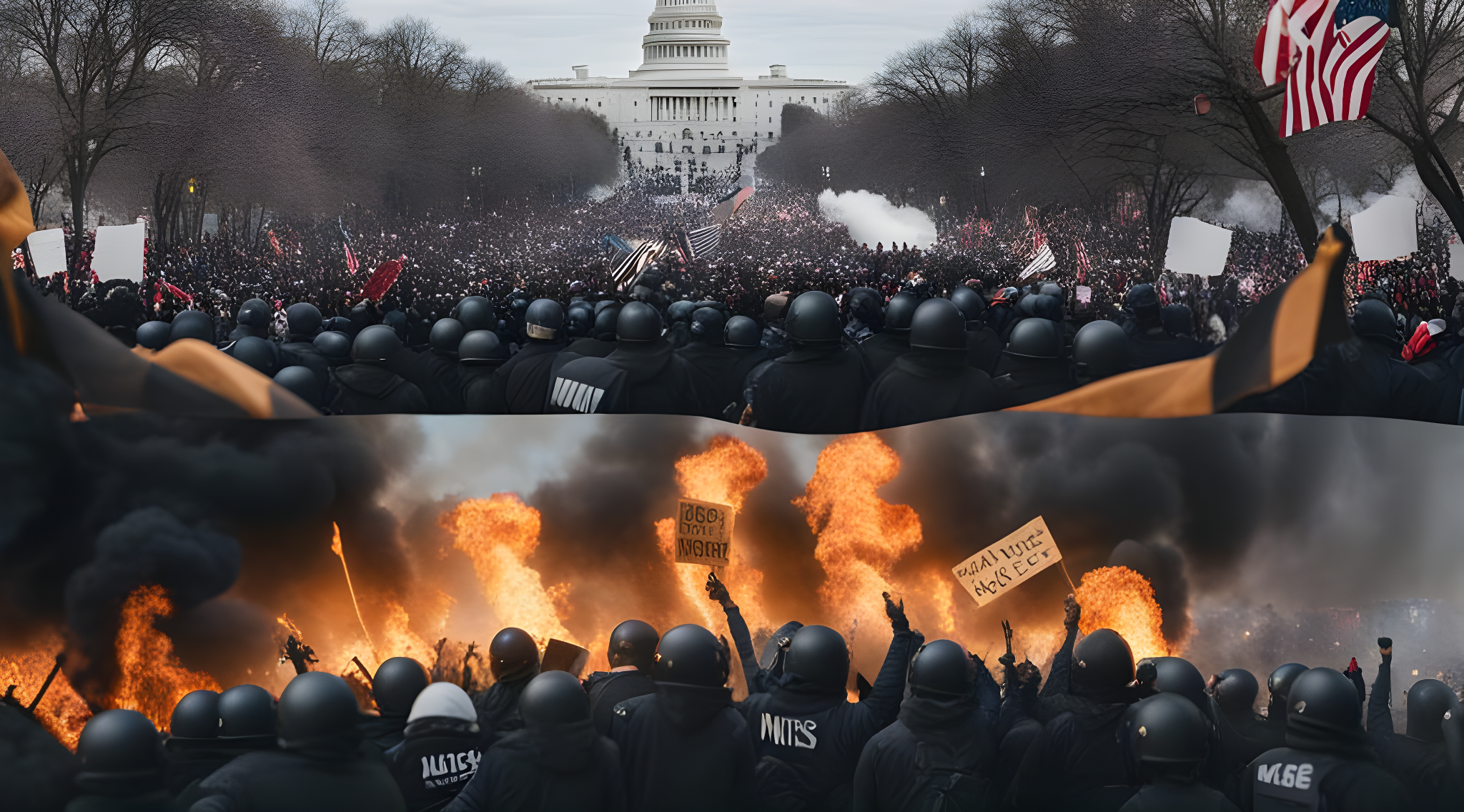In recent years, the United States has witnessed a series of high-profile protests that have had a significant impact on the nation’s political and social landscape. Two of the most notable events were the January 6th Capitol Protest in 2021 and the Black Lives Matter (BLM) protests that took place throughout 2020. While both events were characterized by civil unrest, they differ significantly in several key aspects, including the response of the justice system and media narratives. In this article, we will explore the disparities between these two events, focusing on sentencing outcomes and media portrayals.
- Sentencing Disparities
1.1 January 6th Capitol Protest
The January 6th Capitol Protest saw individuals storming the U.S. Capitol building, leading to damage to property and disruption of the certification of the 2020 presidential election results. While it is essential to acknowledge the severity of the breach, it is equally vital to clarify some misconceptions. Firstly, there were no deaths directly attributed to the protest itself. Second, it was not a “storming” of the Capitol, as some media outlets initially portrayed. Rather, some protesters were let into the building by the police, and they were escorted around.
However, the sentencing outcomes for those involved in the January 6th events have been notably harsh. Many participants have received sentences ranging from probation to several years in prison, with some facing sentences of up to 17 years. This has sparked debates about the proportionality of the punishment and whether it is consistent with other cases of civil unrest.
1.2 Black Lives Matter Protests
The Black Lives Matter protests in 2020, which followed the death of George Floyd, involved widespread demonstrations and instances of looting and property damage. During the day, Some BLM protests were peaceful, but during nightfall acts of violence and criminal activity caused 2 Billion Dollars of insured damage.
One striking contrast with the January 6th Capitol Riot is the disparity in sentencing for individuals involved in the protests. Many of those arrested during BLM protests have faced less severe consequences, with some receiving probation or having their charges dropped entirely. This discrepancy in sentencing outcomes has raised questions about fairness and equity within the justice system.
- Media Narratives
Media narratives surrounding the two events have also contributed to public perception and understanding. In the aftermath of the January 6th Capitol Riot, some media outlets painted the incident as an attempted coup or insurrection. However, subsequent investigations have cast doubt on these claims, highlighting the need for accurate reporting.
On the other hand, the Black Lives Matter protests received a different kind of coverage. While instances of violence and looting did occur during some BLM protests, some media outlets downplayed or omitted these events, instead focusing on the movement’s calls for racial justice and police reform. This selective reporting has led to accusations of bias in the media.
- Other Instances of Civil Unrest
It is worth noting that both events are not isolated incidents. After the 2021 Capital Protest, there were instances of leftist groups occupying or attempting to occupy government buildings, including state capitals. Surprisingly, many of these participants faced minimal legal consequences, further highlighting disparities in the response to civil unrest based on political affiliation or ideology.
The contrasting outcomes and media narratives surrounding the January 6th Capitol Riot and the Black Lives Matter protests have sparked significant debates about justice, fairness, and media integrity. It is essential to approach these discussions with an open mind, acknowledging the complexities of these events and the need for a consistent and unbiased response to civil unrest regardless of the circumstances or ideologies involved. As the nation continues to grapple with the aftermath of these events, a nuanced and balanced understanding is crucial for promoting unity and healing in a divided society.
